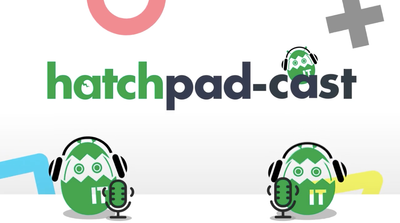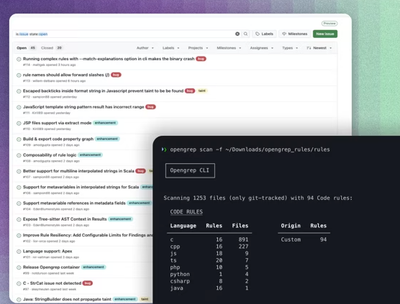
Research
Security News
Lazarus Strikes npm Again with New Wave of Malicious Packages
The Socket Research Team has discovered six new malicious npm packages linked to North Korea’s Lazarus Group, designed to steal credentials and deploy backdoors.
io.github.orgyflame:telegram-bot-api-spring-boot-starter
Advanced tools
Telegram Bot API on Spring WebFlux
A simple to use library to create Telegram Bots using Spring
Let's build a simple bot
Just import add the library to your project with one of these options:
<dependency>
<groupId>io.github.orgyflame</groupId>
<artifactId>telegram-bot-api-spring-boot-starter</artifactId>
<version>5.2.0</version>
</dependency>
implementation 'io.github.orgyflame:telegram-bot-api-spring-boot-starter:5.2.0'
Add these properties to your application.properties file:
telegram.bot.host-url=https://example.com
telegram.bot.token=1234567890:Aa0Bb1Cc2Dd3Ee4
telegram.bot.callback-mapping=/callback/1234567890:Aa0Bb1Cc2Dd3Ee4
package com.orgyflame.demotelegrambot.controller;
import com.orgyflame.springtelegrambotapi.api.method.BotApiMethod;
import com.orgyflame.springtelegrambotapi.api.method.send.SendMessage;
import com.orgyflame.springtelegrambotapi.api.object.Chat;
import com.orgyflame.springtelegrambotapi.api.object.User;
import com.orgyflame.springtelegrambotapi.api.service.TelegramApiService;
import com.orgyflame.springtelegrambotapi.bot.mapping.BotController;
import com.orgyflame.springtelegrambotapi.bot.mapping.BotMapping;
import com.orgyflame.springtelegrambotapi.bot.mapping.parameter.ChatParam;
import com.orgyflame.springtelegrambotapi.bot.mapping.parameter.FromParam;
import com.orgyflame.springtelegrambotapi.exceptions.TelegramApiValidationException;
@BotController
public class DemoController {
private final TelegramApiService telegramApiService;
public DemoController(TelegramApiService telegramApiService) {
this.telegramApiService = telegramApiService;
}
private void send(BotApiMethod botApiMethod) {
try {
telegramApiService.sendApiMethod(botApiMethod).subscribe();
} catch (TelegramApiValidationException e) {
e.printStackTrace();
}
}
@BotMapping(value = "/hello", description = "Greets the user")
public void hello(@FromParam User user, @ChatParam Chat chat) {
SendMessage sendMessage = new SendMessage();
sendMessage.setChatId(String.valueOf(chat.getId()));
sendMessage.setText("Hello," + user.getFirstName());
send(sendMessage);
}
}
All bot commands are handled by controllers.
These components are identified
by @BotController annotation.
The @BotMapping annotation ensures that
all messages that start with /hello command
are mapped to hello() method.
The @FromParam annotation gets the user who
send the message. The @ChatParam annotation gets
the chat where the user sent the message.
The SendMessage object is a Telegram Bot API
request.
The TelegramApiService is a spring component
that provides the ability to send Telegram Bot
API requests.
package com.orgyflame.demotelegrambot.controller;
import com.orgyflame.springtelegrambotapi.api.method.AnswerCallbackQuery;
import com.orgyflame.springtelegrambotapi.api.method.BotApiMethod;
import com.orgyflame.springtelegrambotapi.api.method.send.SendMessage;
import com.orgyflame.springtelegrambotapi.api.object.Chat;
import com.orgyflame.springtelegrambotapi.api.object.Update;
import com.orgyflame.springtelegrambotapi.api.object.User;
import com.orgyflame.springtelegrambotapi.api.service.TelegramApiService;
import com.orgyflame.springtelegrambotapi.bot.container.BotCallbackQueryContainer;
import com.orgyflame.springtelegrambotapi.bot.inline.menu.InlineMenu;
import com.orgyflame.springtelegrambotapi.bot.inline.menu.InlineMenuButton;
import com.orgyflame.springtelegrambotapi.bot.mapping.BotController;
import com.orgyflame.springtelegrambotapi.bot.mapping.BotMapping;
import com.orgyflame.springtelegrambotapi.bot.mapping.parameter.ChatParam;
import com.orgyflame.springtelegrambotapi.bot.mapping.parameter.FromParam;
import com.orgyflame.springtelegrambotapi.exceptions.TelegramApiValidationException;
@BotController
public class DemoController {
private final TelegramApiService telegramApiService;
private final BotCallbackQueryContainer botCallbackQueryContainer;
public DemoController(TelegramApiService telegramApiService, BotCallbackQueryContainer botCallbackQueryContainer) {
this.telegramApiService = telegramApiService;
this.botCallbackQueryContainer = botCallbackQueryContainer;
}
private void send(BotApiMethod botApiMethod) {
try {
telegramApiService.sendApiMethod(botApiMethod).subscribe();
} catch (TelegramApiValidationException e) {
e.printStackTrace();
}
}
@BotMapping(value = "/hello", description = "Greets the user")
public void hello(@FromParam User user, @ChatParam Chat chat) {
SendMessage sendMessage = new SendMessage();
sendMessage.setChatId(String.valueOf(chat.getId()));
sendMessage.setText("Hello," + user.getFirstName());
send(sendMessage);
}
@BotMapping(value = "/inline", description = "Show inline keyboard")
public void inlineKeyboard(@ChatParam Chat chat) {
SendMessage sendMessage = new SendMessage();
sendMessage.setChatId(String.valueOf(chat.getId()));
sendMessage.setText("keyboard:");
InlineMenu inlineMenu = InlineMenu.builder()
.button(
InlineMenuButton.builder()
.text("button 1")
.onQueryCallback(this::button1Callback)
.build()
)
.row()
.button(
InlineMenuButton.builder()
.text("button 2")
.onQueryCallback(this::button2Callback)
.build()
)
.build(botCallbackQueryContainer);
sendMessage.setReplyMarkup(inlineMenu);
send(sendMessage);
}
public AnswerCallbackQuery button1Callback(Update update) {
AnswerCallbackQuery answerCallbackQuery = new AnswerCallbackQuery();
answerCallbackQuery.setCallbackQueryId(update.getCallbackQuery().getId());
answerCallbackQuery.setText("Clicked on button 1");
return answerCallbackQuery;
}
private AnswerCallbackQuery button2Callback(Update update) {
AnswerCallbackQuery answerCallbackQuery = new AnswerCallbackQuery();
answerCallbackQuery.setCallbackQueryId(update.getCallbackQuery().getId());
answerCallbackQuery.setText("Clicked on button 2");
return answerCallbackQuery;
}
}
The InlineMenuButtonBuilder.text() method
adds a text for the inline button. The
InlineMenuButtonBuilder.onQueryCallback()
method adds a callback method for the button.
The InlineMenuBuilder.button() method
adds new inline button for the current row.
The InlineMenuBuilder.row() method
adds new row for the inline keyboard.
The BotCallbackQueryContainer is a
spring component that provides the ability
to build inline keyboard with callbacks.
package com.orgyflame.demotelegrambot.controller;
import com.orgyflame.springtelegrambotapi.api.method.AnswerCallbackQuery;
import com.orgyflame.springtelegrambotapi.api.method.BotApiMethod;
import com.orgyflame.springtelegrambotapi.api.method.send.SendMessage;
import com.orgyflame.springtelegrambotapi.api.object.Chat;
import com.orgyflame.springtelegrambotapi.api.object.Update;
import com.orgyflame.springtelegrambotapi.api.object.User;
import com.orgyflame.springtelegrambotapi.api.service.TelegramApiService;
import com.orgyflame.springtelegrambotapi.bot.container.BotCallbackQueryContainer;
import com.orgyflame.springtelegrambotapi.bot.inline.menu.InlineMenu;
import com.orgyflame.springtelegrambotapi.bot.inline.menu.InlineMenuButton;
import com.orgyflame.springtelegrambotapi.bot.mapping.BotController;
import com.orgyflame.springtelegrambotapi.bot.mapping.BotMapping;
import com.orgyflame.springtelegrambotapi.bot.mapping.parameter.ChatParam;
import com.orgyflame.springtelegrambotapi.bot.mapping.parameter.FromParam;
import com.orgyflame.springtelegrambotapi.exceptions.TelegramApiValidationException;
@BotController
public class DemoController {
private final TelegramApiService telegramApiService;
private final BotCallbackQueryContainer botCallbackQueryContainer;
public DemoController(TelegramApiService telegramApiService, BotCallbackQueryContainer botCallbackQueryContainer) {
this.telegramApiService = telegramApiService;
this.botCallbackQueryContainer = botCallbackQueryContainer;
}
private void send(BotApiMethod botApiMethod) {
try {
telegramApiService.sendApiMethod(botApiMethod).subscribe();
} catch (TelegramApiValidationException e) {
e.printStackTrace();
}
}
@BotMapping(value = "/hello", description = "Greets the user")
public void hello(@FromParam User user, @ChatParam Chat chat) {
SendMessage sendMessage = new SendMessage();
sendMessage.setChatId(String.valueOf(chat.getId()));
sendMessage.setText("Hello," + user.getFirstName());
send(sendMessage);
}
@BotMapping(value = "/inline", description = "Show inline keyboard")
public void inlineKeyboard(@ChatParam Chat chat) {
SendMessage sendMessage = new SendMessage();
sendMessage.setChatId(String.valueOf(chat.getId()));
sendMessage.setText("keyboard:");
InlineMenu inlineMenu = InlineMenu.builder()
.button(
InlineMenuButton.builder()
.text("button 1")
.onQueryCallback(this::button1Callback)
.build()
)
.row()
.button(
InlineMenuButton.builder()
.text("button 2")
.onQueryCallback(this::button2Callback)
.build()
)
.build(botCallbackQueryContainer);
sendMessage.setReplyMarkup(inlineMenu);
send(sendMessage);
}
public AnswerCallbackQuery button1Callback(Update update) {
AnswerCallbackQuery answerCallbackQuery = new AnswerCallbackQuery();
answerCallbackQuery.setCallbackQueryId(update.getCallbackQuery().getId());
answerCallbackQuery.setText("Clicked on button 1");
return answerCallbackQuery;
}
private AnswerCallbackQuery button2Callback(Update update) {
AnswerCallbackQuery answerCallbackQuery = new AnswerCallbackQuery();
answerCallbackQuery.setCallbackQueryId(update.getCallbackQuery().getId());
answerCallbackQuery.setText("Clicked on button 2");
return answerCallbackQuery;
}
@BotMapping
public void defaultMapping(@ChatParam Chat chat) {
SendMessage sendMessage = new SendMessage();
sendMessage.setChatId(String.valueOf(chat.getId()));
sendMessage.setText("default");
send(sendMessage);
}
}
The @BotMapping annotation with empty
value ensures that
all messages with unsupported commands
are mapped to defaultMapping() method.
To send requests you must inject
TelegramApiService
to your spring component, like this:
import com.orgyflame.springtelegrambotapi.api.object.ApiResponse;
import com.orgyflame.springtelegrambotapi.api.service.TelegramApiService;
import org.springframework.stereotype.Component;
import reactor.core.publisher.Mono;
@Component
public class MySpringComponent {
private final TelegramApiService telegramApiService;
public MySpringComponent(TelegramApiService telegramApiService) {
this.telegramApiService = telegramApiService;
}
}
or this:
import com.orgyflame.springtelegrambotapi.api.service.TelegramApiService;
import org.springframework.beans.factory.annotation.Autowired;
import org.springframework.stereotype.Component;
@Component
public class MySpringComponent {
@Autowired
private TelegramApiService telegramApiService;
}
Requests are sent like this:
Mono<ApiResponse> response = telegramApiService.sendApiMethod(someBotApiMethod);
All Bot API methods are in com.orgyflame.springtelegrambotapi.api.method package.
All Bot API types are in com.orgyflame.springtelegrambotapi.api.object package.
All param annotations for
methods marked with an @BotMapping
annotation are in:
com.orgyflame.springtelegrambotapi.bot.mapping.parameter package
FAQs
Telegram Bot API on Spring WebFlux
We found that io.github.orgyflame:telegram-bot-api-spring-boot-starter demonstrated a not healthy version release cadence and project activity because the last version was released a year ago. It has 0 open source maintainers collaborating on the project.
Did you know?

Socket for GitHub automatically highlights issues in each pull request and monitors the health of all your open source dependencies. Discover the contents of your packages and block harmful activity before you install or update your dependencies.

Research
Security News
The Socket Research Team has discovered six new malicious npm packages linked to North Korea’s Lazarus Group, designed to steal credentials and deploy backdoors.

Security News
Socket CEO Feross Aboukhadijeh discusses the open web, open source security, and how Socket tackles software supply chain attacks on The Pair Program podcast.

Security News
Opengrep continues building momentum with the alpha release of its Playground tool, demonstrating the project's rapid evolution just two months after its initial launch.